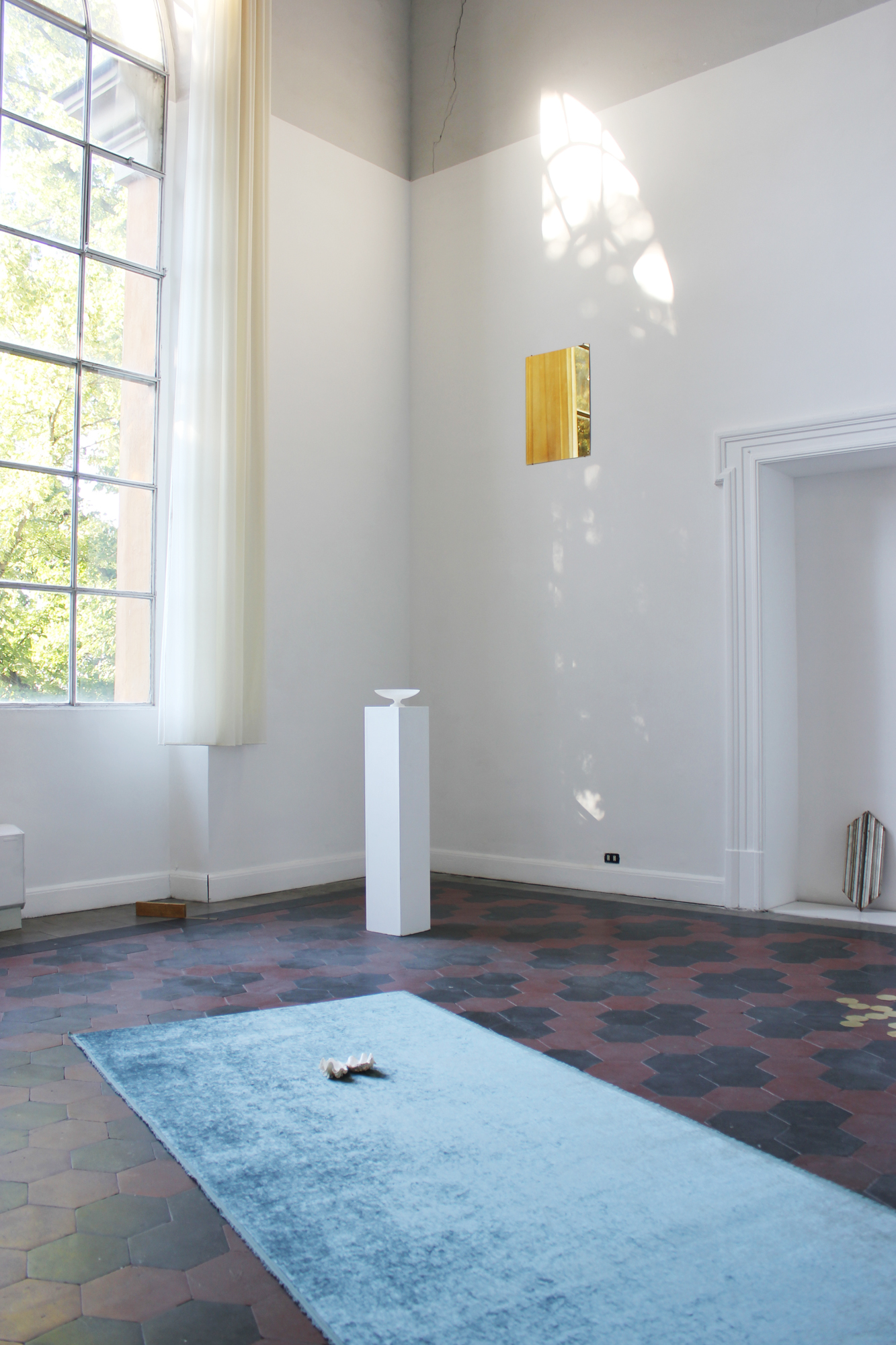
The Birth of Venus
Shell and cotton velvet
Shell and cotton velvet
Sacrarium
Rome, 2019
Found objects Real Academia de España en Roma Project: NumenObjects are in the world, we incorporate them into our lives. We touch them every day and we collect them for their potential value or because we forget about them. When we die, all these objects just sit there, and for a while, they stay in exactly the same place as where we left them. They stay there until other people move them, desacralizing our last movement. From then on the objects live another life. Some end up in flea markets, acquired by other people who are unaware of their past, and they are incorporated into other lives. And only a few are rescued by poets, who see meanings in them that escape the eyes of others; and they sacralize them turning them into works of art. That is exactly what I did on Sundays in Rome. I went out to the Porta Portese market to rescue objects. I lived with them, and I observed them, to find new meanings in them. It is a very personal process of sacralization. It is related to the idea of numen, a word that not only refers to the divinity of classic mythology, but also the idea of the magical power that exists in the object, and the inspirational power that motivates the poet.


 Touch I.
Touch I.Green marble and Silk Velvet


Venus-Eve-Virgin.
Snakeskin, nappa leather gloves, silver mirrors, crystal, brass trays, and light.

Venus-Eve-Virgin.
Snakeskin, nappa leather gloves, silver mirrors, crystal and light.
The artist perceives, finds, and creates actions
that seems to talk to the other world. They visualize the ephemeral events, transforming spaces and objects that speak of the presence and the absence alongside those that we coexist with. They reproduce events and produce sacred objects, which are used as a lararium (household shrine), this ritual practice of the ancient Roman dwellings consisted in building small shrines where offerings were made. Sacrarium is the name given to the chapel of the Roman domus, where sacred objects were kept and domesticity was worshipped and in the exhibition room I have arranged objects and changed the space with them to create a room intended for domestic worship.
that seems to talk to the other world. They visualize the ephemeral events, transforming spaces and objects that speak of the presence and the absence alongside those that we coexist with. They reproduce events and produce sacred objects, which are used as a lararium (household shrine), this ritual practice of the ancient Roman dwellings consisted in building small shrines where offerings were made. Sacrarium is the name given to the chapel of the Roman domus, where sacred objects were kept and domesticity was worshipped and in the exhibition room I have arranged objects and changed the space with them to create a room intended for domestic worship.
Silver dress (found object)
 The Limestone Horizon.
The Limestone Horizon. Alabaster and water lime.

 Touch III.
Touch III. Polychrome wood and glass.
 Eternity, martyrdom, victory, and peace.
Eternity, martyrdom, victory, and peace. Leaves of Acanthus, palm tree, laurel, and olive that I found on the street in my walks in Rome.
 Mother wood.
Mother wood. Intervention on the frame of one of the academy's doors.

The cult of the center
Cotton velvet and glass
250 x 300 cm
Painting-sculpture
Assembled wooden frame
40 x 18 x 3 cm
Assembled wooden frame
40 x 18 x 3 cm
